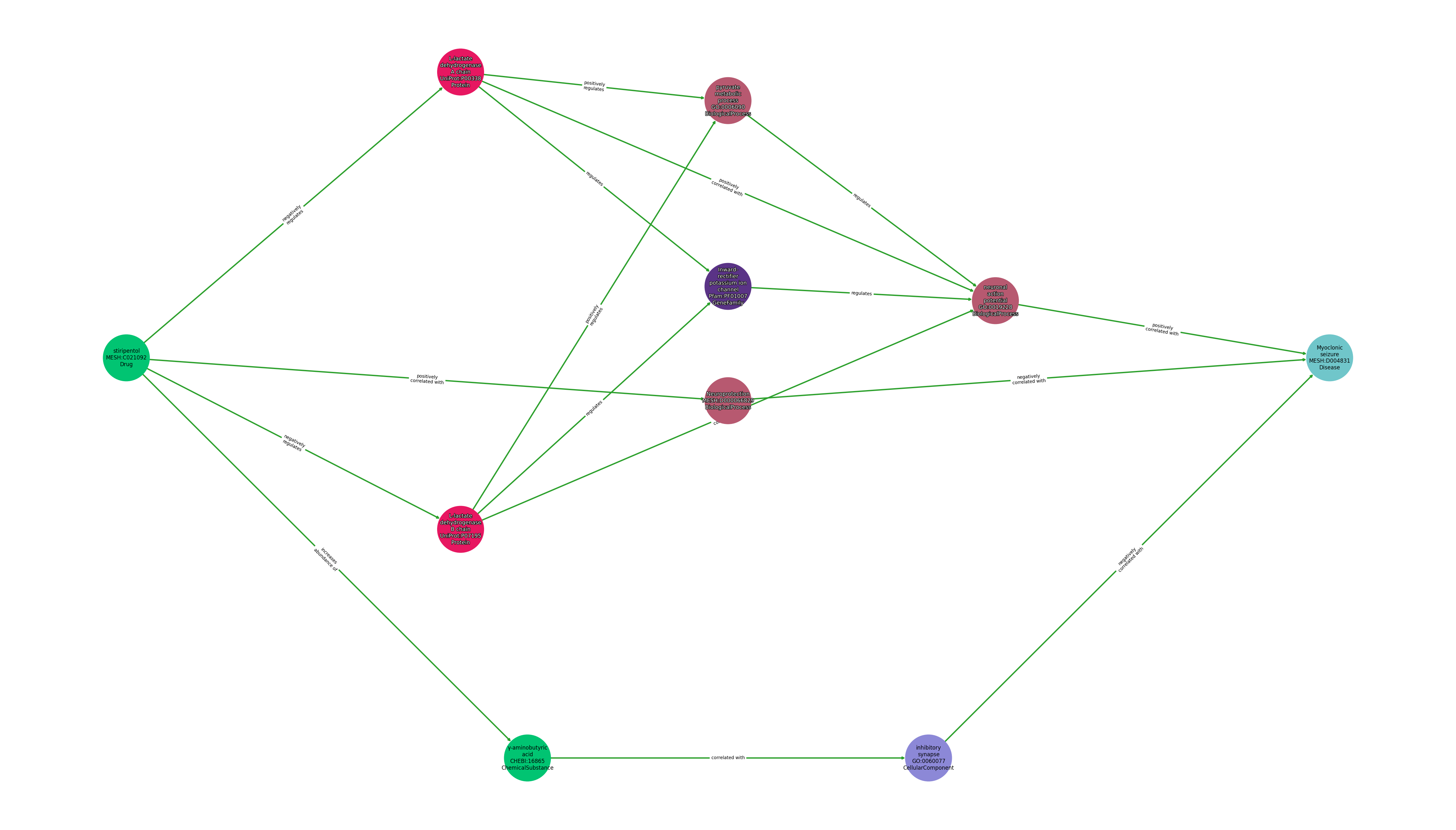Path ID: DB09118_MESH_D004831_1

Concepts
| Identifier | Name | Type |
|---|---|---|
| MESH:C021092 | stiripentol | Drug |
| CHEBI:16865 | γ-aminobutyric acid | ChemicalSubstance |
| GO:0060077 | inhibitory synapse | CellularComponent |
| UniProt:P00338 | L-lactate dehydrogenase A chain | Protein |
| UniProt:P07195 | L-lactate dehydrogenase B chain | Protein |
| GO:0006090 | pyruvate metabolic process | BiologicalProcess |
| Pfam:PF01007 | Inward-rectifier potassium ion channel | GeneFamily |
| GO:0019228 | neuronal action potential | BiologicalProcess |
| MESH:D000066829 | Neuroprotection | BiologicalProcess |
| MESH:D004831 | Myoclonic seizure | Disease |
Relationships
NOTE: predicates are annotated in Biolink Model (v1.3.0)
| Subject | Predicate | Object |
|---|---|---|
| Stiripentol | NEGATIVELY REGULATES | L-Lactate Dehydrogenase A Chain |
| Stiripentol | POSITIVELY CORRELATED WITH | Neuroprotection |
| Neuroprotection | NEGATIVELY CORRELATED WITH | Myoclonic Seizure |
| Stiripentol | NEGATIVELY REGULATES | L-Lactate Dehydrogenase B Chain |
| L-Lactate Dehydrogenase A Chain | POSITIVELY REGULATES | Pyruvate Metabolic Process |
| L-Lactate Dehydrogenase B Chain | POSITIVELY REGULATES | Pyruvate Metabolic Process |
| Pyruvate Metabolic Process | REGULATES | Neuronal Action Potential |
| L-Lactate Dehydrogenase B Chain | REGULATES | Inward-Rectifier Potassium Ion Channel |
| L-Lactate Dehydrogenase A Chain | REGULATES | Inward-Rectifier Potassium Ion Channel |
| Inward-Rectifier Potassium Ion Channel | REGULATES | Neuronal Action Potential |
| L-Lactate Dehydrogenase A Chain | POSITIVELY CORRELATED WITH | Neuronal Action Potential |
| L-Lactate Dehydrogenase B Chain | POSITIVELY CORRELATED WITH | Neuronal Action Potential |
| Neuronal Action Potential | POSITIVELY CORRELATED WITH | Myoclonic Seizure |
| Stiripentol | INCREASES ABUNDANCE OF | Γ-Aminobutyric Acid |
| Γ-Aminobutyric Acid | CORRELATED WITH | Inhibitory Synapse |
| Inhibitory Synapse | NEGATIVELY CORRELATED WITH | Myoclonic Seizure |
Comment: A working hypothesis for a mode of action is that reduced metabolism weakens homeostatic control of intracellular and extracellular ionic concentrations, leading to hyperexcitability and seizure. However it’s not known the exact mechanisms by which (A) glucose deprivation cause ionic imbalance and at the same time sustain neuronal hyperexcitability (i.e., a status associated with higher metabolic demands); and (B) which reduced glucose metabolism can generate seizures while also being anticonvulsant (https://pubmed.ncbi.nlm.nih.gov/29143800/).
Reference: